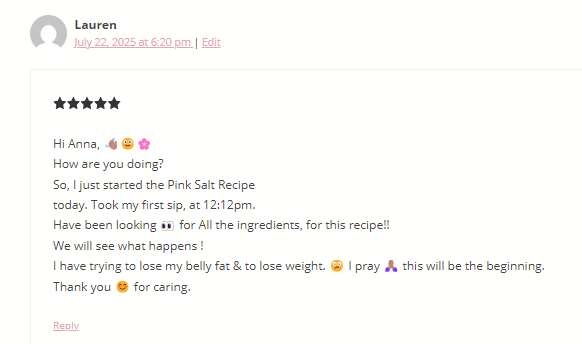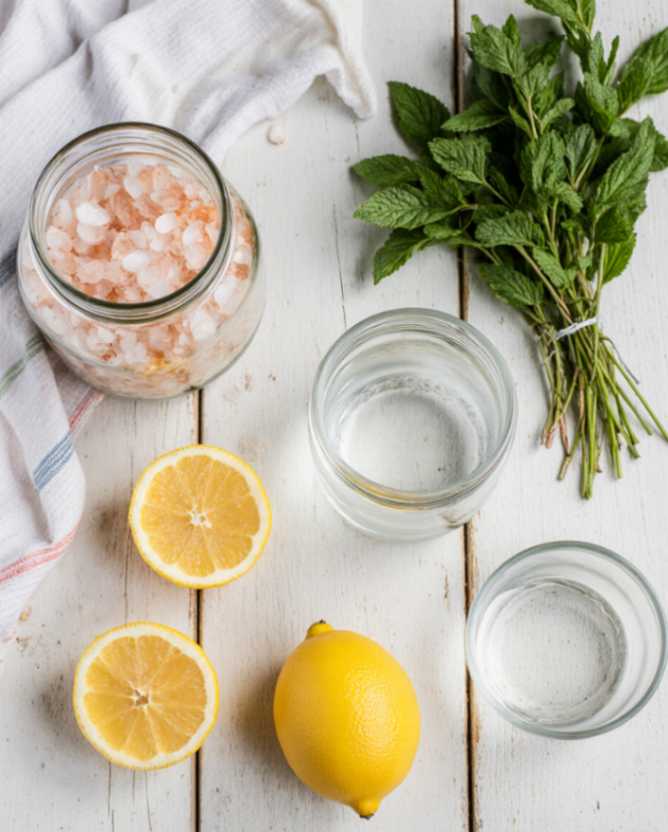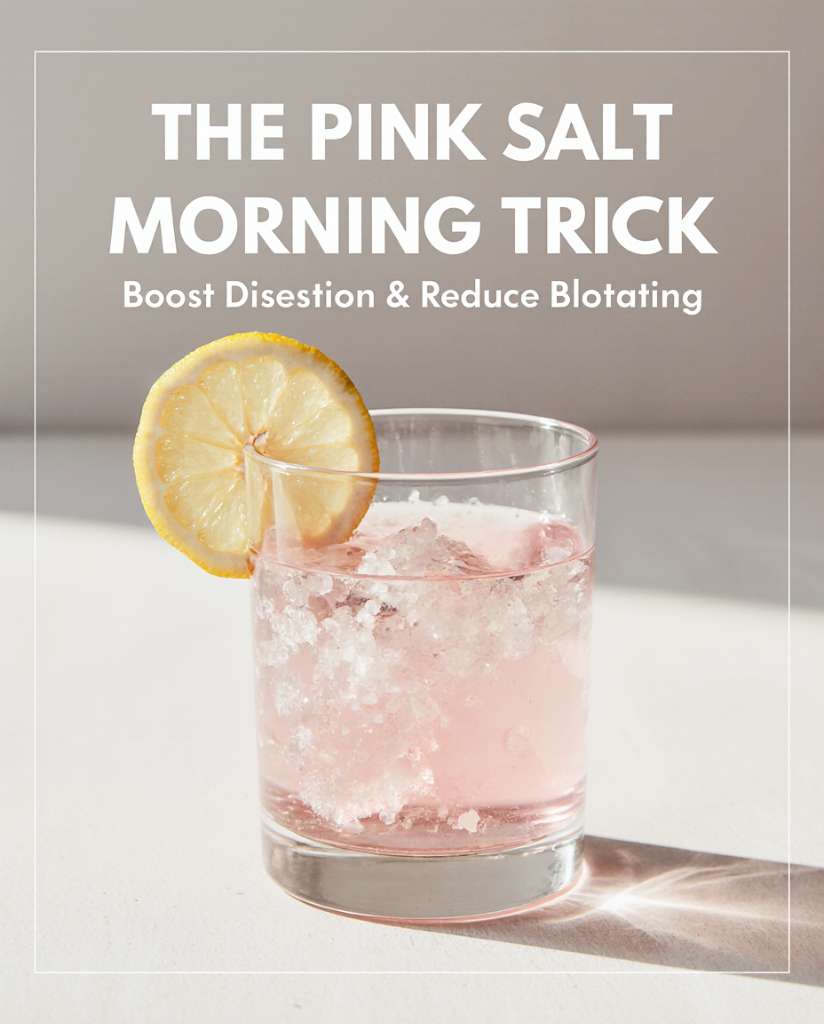Pink salt vs sea salt for weight loss is a hot debate right now and for good reason.
If you’re trying to lose weight naturally, you’ve probably heard about the viral pink salt trick but what about sea salt? Are they the same? Is one more effective than the other when it comes to burning fat, boosting your metabolism, or reducing water retention?
In this ultimate 2025 guide, I’ll break down the real differences between pink Himalayan salt and sea salt, and tell you which one might actually support your weight loss journey more effectively based on science, taste, and how your body reacts.
Let’s settle this salty debate once and for all!
Pink Salt vs Sea Salt: What’s Really Inside?
When you’re choosing a salt to support your weight loss goals, it’s not just about taste it’s about minerals, purity, and how your body reacts.
Pink Himalayan salt comes from ancient mines deep in the Himalayas. It’s naturally rich in over 80 trace minerals like potassium, magnesium, and calcium, which are known to help with hydration, digestion, and even metabolism support. Its rosy color? That comes from iron oxide, and unlike heavily processed table salt, pink salt is usually left in a more natural state. Many people use it in morning detox drinks, metabolism boosters, or during fasting routines.

Sea salt, on the other hand, is harvested by evaporating seawater. It has a sharper, saltier taste and contains slightly more natural iodine, which is important for thyroid health. But unlike pink salt, it offers fewer trace minerals overall and depending on where it’s sourced, it might even carry traces of microplastics (not cute). Sea salt works well in cooking or when you need a quick solution for water retention, but it lacks the mineral depth that makes pink salt a favorite in wellness circles.
Bottom line: both salts have their place, but for long-term weight loss and natural detox, pink salt is the one that keeps showing up in the spotlight.
When I need something even more hydrating, this is my go-to: Pink Salt Weight Loss: My Morning Ritual for Bloat, Cravings & Clarity
Do They Really Help You Lose Weight?
Let’s be real salt alone won’t melt the fat off. But the type of salt you choose can influence how your body holds water, how often you feel bloated, and even how intense your cravings get.
Pink salt is often praised for its ability to balance electrolytes, which is especially helpful if you’re drinking lots of water, fasting, or sweating more during workouts. Many people notice they feel less puffy and more energized after swapping regular salt for pink. Thanks to its magnesium content, it may also support digestion and reduce constipation—two sneaky issues that often make you feel “heavier” than you actually are.
Sea salt, with its naturally higher iodine levels, plays a different role. Iodine supports thyroid function, which directly impacts metabolism. If your thyroid is sluggish, burning fat becomes way harder—so this makes sea salt useful, especially if your diet is low in iodine-rich foods like seaweed or eggs.
Still, the detox buzz around pink salt isn’t just hype. When used in moderation, it can help your body release excess water, regulate cravings, and even support better sleep—all things that gently support weight loss over time.
So no, neither salt is a magic pill. But used wisely, they can both be helpful allies in your wellness toolbox.
When to Use Pink Salt vs Sea Salt
Here’s the thing: it’s not about choosing only one salt forever. It’s about using the right one at the right timeì based on what your body needs and how you’re trying to support it.
Use pink salt when you want to gently detox, reduce bloating, or support your metabolism—especially in the morning. Many wellness routines include pink salt in warm lemon water or apple cider vinegar shots to jumpstart digestion and hydration. It’s also great during intermittent fasting or after workouts, when your body needs to replenish minerals without spiking insulin levels.
Try mixing 1/4 teaspoon of pink salt in warm water with lemon juice first thing in the morning—you might be surprised how energized and “clean” you feel within minutes.
Use sea salt when you’re cooking or need to quickly beat water retention from a salty meal. Its sharper flavor works well in savory dishes, and the iodine boost is helpful if you’re not getting enough from your diet. A pinch of sea salt in homemade soups, steamed veggies, or scrambled eggs can be the perfect balance of flavor and function.

Quick tip: if you ever feel puffy after a cheat day or a late dinner, sea salt in a warm broth (with parsley or dandelion tea) can help flush things out.
In short pink salt is your daily ritual, and sea salt is your kitchen staple. They each play a different role, and when used with intention, they work beautifully together.
When I need something even more hydrating, this is my go-to: Natural Ozempic Alternative – No Injections Needed
FAQs
Which is healthier, sea salt or pink salt?
It depends on your body’s needs. Pink salt contains more trace minerals, like magnesium and potassium, which can support hydration and digestion. Sea salt, on the other hand, has slightly more natural iodine, which is essential for thyroid health. If you’re looking for mineral diversity and a more “wellness-focused” option, pink salt often wins. But for everyday cooking and iodine support, sea salt is still a great choice.
Which salt is the best for weight loss?
Pink salt is often considered the better choice for weight loss, mainly because of its mineral content. It helps reduce water retention, supports electrolyte balance, and can aid digestion especially when used in detox drinks or fasting routines. While no salt directly burns fat, pink salt creates conditions in your body that support weight loss more naturally than sea salt.
What is the disadvantage of pink salt?
While pink salt sounds like a miracle, it’s not perfect. One key downside is that it contains very little iodine so if you’re not getting enough from your diet, it might not support your thyroid as well as iodized sea salt. It’s also slightly more expensive, and like any salt, overuse can still affect blood pressure if you’re not careful. Moderation is key.
Is Himalayan salt better than sea salt for high blood pressure?
Not necessarily. While Himalayan salt (pink salt) is less processed and richer in minerals, it’s still salt meaning it contains sodium, which can raise blood pressure if consumed in excess. However, some people say they retain less water or feel less bloated with pink salt. If you have high blood pressure, talk to your doctor before switching salts, and always use any salt sparingly.
What is the pink salt trick to lose weight?
The “pink salt trick” usually refers to drinking a mix of warm water, lemon juice, and a pinch of pink Himalayan salt first thing in the morning. It’s said to kickstart digestion, reduce bloating, and help regulate cravings. While not a weight loss miracle, this habit can support a healthy metabolism and help flush out excess water when used consistently as part of a clean routine.
What is the healthiest salt for your body?
The healthiest salt is the one that supports your body’s needs without going overboard. For mineral support and gentle detox, pink Himalayan salt is a favorite. For thyroid health and cooking convenience, sea salt or iodized salt is often better. Instead of focusing on just one type, try using both mindfully based on how your body feels.
When I need something even more hydrating, this is my go-to: The Pink Salt Trick Recipe for Weight Loss 2025


